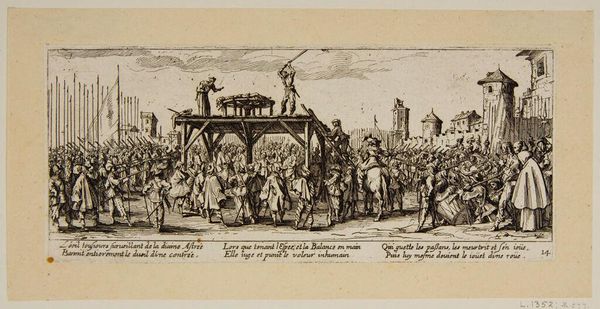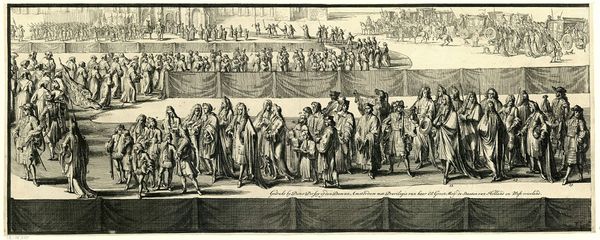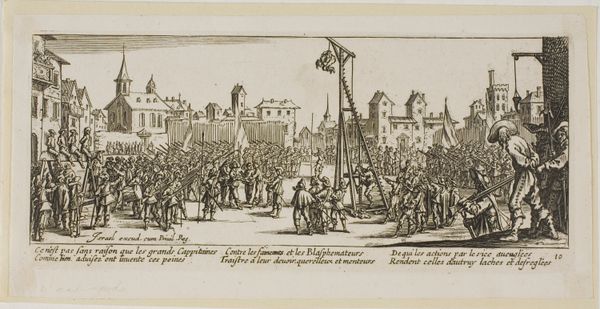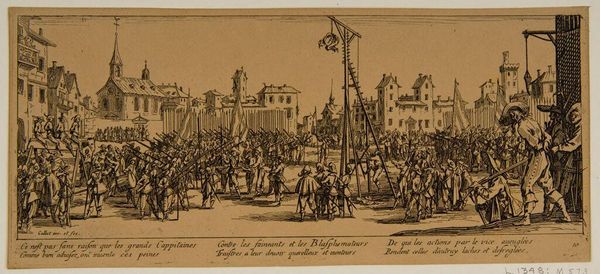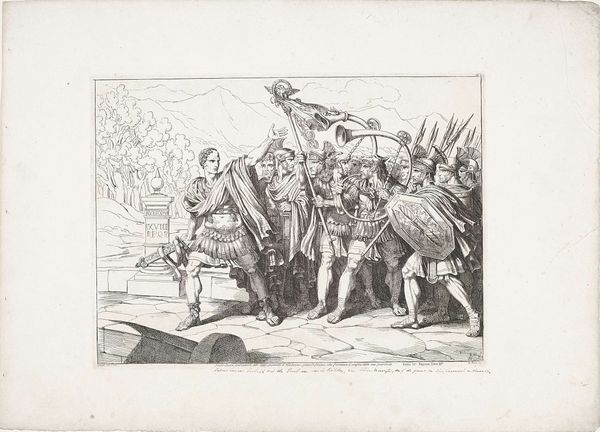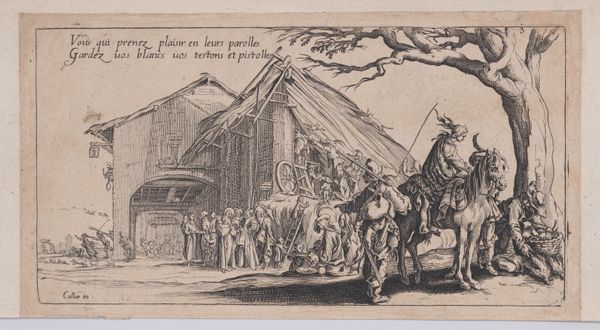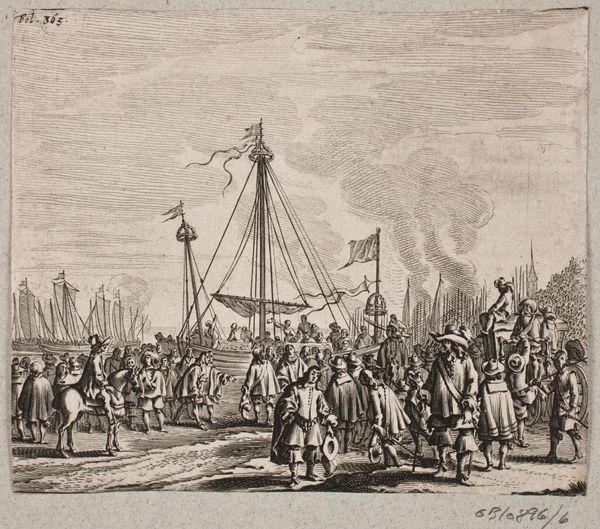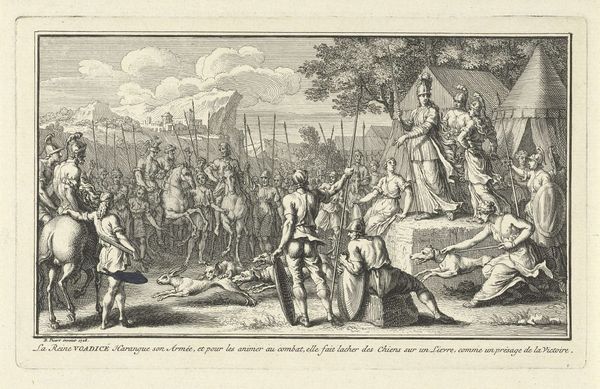
Dimensions: Image: 7.3 Ã 18.4 cm (2 7/8 Ã 7 1/4 in.) Sheet: 8.8 Ã 19 cm (3 7/16 Ã 7 1/2 in.)
Copyright: CC0 1.0
Curator: This is Jacques Callot's "The Wheel of Execution," an etching. Callot was a printmaker active in the early 17th century. Editor: It's stark. Look at the scale; it packs an awful lot of death and order into a small space, all etched with such precise lines. Curator: The etching shows a public execution. These events were spectacles, carefully orchestrated displays of power. Note the soldiers flanking the scene. Editor: Power maintained through the labor of the executioner, the assembly of the scaffold. It's all carefully constructed for maximum visibility and, I'd argue, maximum control. Curator: Indeed. Callot witnessed and documented the realities of war and social control during a tumultuous period in European history. His prints circulated widely, shaping public opinion. Editor: The material itself—the ink, the copper plate, the press—becomes a tool of statecraft. A reproducible image of punishment, replicated and disseminated. Curator: I find myself considering the role such imagery plays in shaping our understanding of authority and justice. Editor: And I'm left thinking about the labor involved in producing this image, both the physical act of execution and Callot's own meticulous craft.
Comments
No comments
Be the first to comment and join the conversation on the ultimate creative platform.


